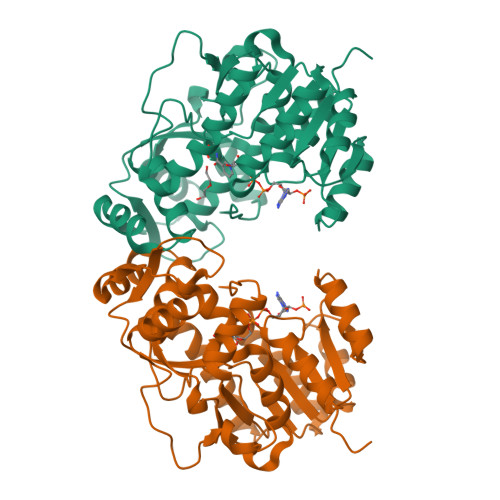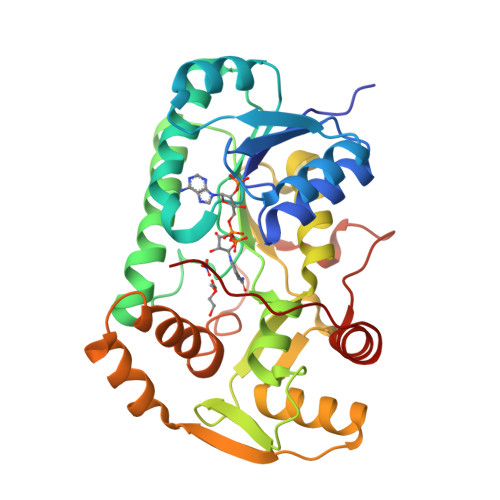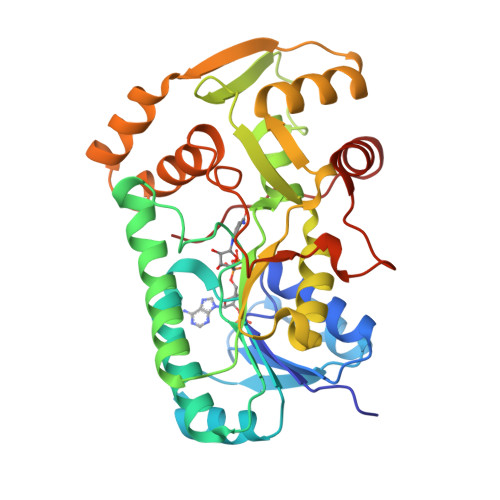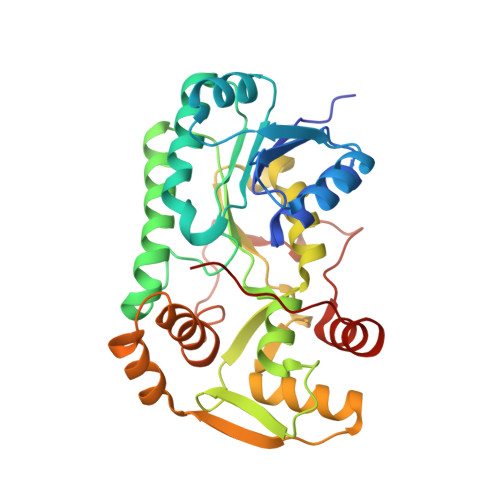Structure and reaction mechanism of basil eugenol synthase.
Louie, G.V., Baiga, T.J., Bowman, M.E., Koeduka, T., Taylor, J.H., Spassova, S.M., Pichersky, E., Noel, J.P.(2007) PLoS One 2: e993-e993
- PubMed: 17912370
- DOI: https://doi.org/10.1371/journal.pone.0000993
- Primary Citation of Related Structures:
2QW8, 2QX7, 2QYS, 2QZZ, 2R2G, 2R6J - PubMed Abstract:
Phenylpropenes, a large group of plant volatile compounds that serve in multiple roles in defense and pollinator attraction, contain a propenyl side chain. Eugenol synthase (EGS) catalyzes the reductive displacement of acetate from the propenyl side chain of the substrate coniferyl acetate to produce the allyl-phenylpropene eugenol. We report here the structure determination of EGS from basil (Ocimum basilicum) by protein x-ray crystallography. EGS is structurally related to the short-chain dehydrogenase/reductases (SDRs), and in particular, enzymes in the isoflavone-reductase-like subfamily. The structure of a ternary complex of EGS bound to the cofactor NADP(H) and a mixed competitive inhibitor EMDF ((7S,8S)-ethyl (7,8-methylene)-dihydroferulate) provides a detailed view of the binding interactions within the EGS active site and a starting point for mutagenic examination of the unusual reductive mechanism of EGS. The key interactions between EMDF and the EGS-holoenzyme include stacking of the phenyl ring of EMDF against the cofactor's nicotinamide ring and a water-mediated hydrogen-bonding interaction between the EMDF 4-hydroxy group and the side-chain amino moiety of a conserved lysine residue, Lys132. The C4 carbon of nicotinamide resides immediately adjacent to the site of hydride addition, the C7 carbon of cinnamyl acetate substrates. The inhibitor-bound EGS structure suggests a two-step reaction mechanism involving the formation of a quinone-methide prior to reduction. The formation of this intermediate is promoted by a hydrogen-bonding network that favors deprotonation of the substrate's 4-hydroxyl group and disfavors binding of the acetate moiety, akin to a push-pull catalytic mechanism. Notably, the catalytic involvement in EGS of the conserved Lys132 in preparing the phenolic substrate for quinone methide formation through the proton-relay network appears to be an adaptation of the analogous role in hydrogen bonding played by the equivalent lysine residue in other enzymes of the SDR family.
Organizational Affiliation:
Jack H. Skirball Center for Chemical Biology and Proteomics, The Salk Institute for Biological Studies, La Jolla, California, United States of America.






















